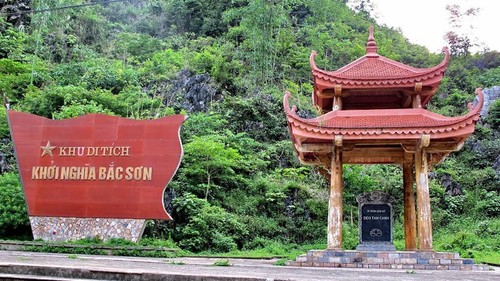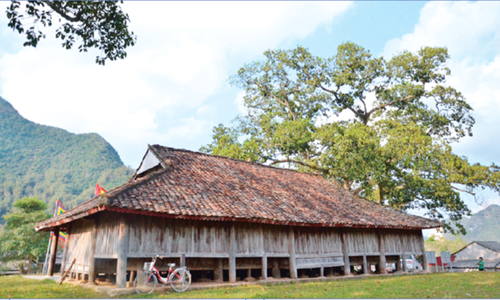 The Bac Son Uprising Historical Relic in Lang Son province (Photo: baochinhphu.vn) The Bac Son Uprising Historical Relic in Lang Son province (Photo: baochinhphu.vn) |
The Bac Son Uprising relic site marks a series of revolutionary events, including the establishment of the first Party cell in Bac Son (1930-1936), the movement to fight for people's rights and democracy and the establishment of the Bac Son district Party Committee (1936-1939), and the Bac Son Uprising (September 27, 1940) which ignited a revolutionary struggle across the country.
The relic site also showcases the establishment of the Bac Son guerrilla base (October 16, 1940), the birth of the Viet Minh Front to prepare forces for the uprising (1941-1945), the formation of the Bac Son National Salvation Army (February 1941), the resistance against the Japanese fascists to save the country, and the uprising to seize power in 1945.
Duong Hong Hanh, Deputy Head of the Bac Son district Culture and Information Office, said: “In the struggle against the French, people of different ethnic groups in Bac Son united and contributed manpower and materials to the revolution, playing an important role in liberating the homeland.”
The relic site was a safe hiding place for senior officials of the government and the Northern Party Committee. It sheltered a communication station between the Party Central Committee and the Northern Party Committee and other localities, and distributed documents for the Party's training of revolutionary cadres.
As part of the relic site, Nong Luc temple hosted the meeting to decide the time of the Bac Son Uprising. Close to the temple is the Mo Nhai outpost, which the uprising forces attacked to take control from the French army on September 27, 1940. The remaining vestiges are two rectangular stone house foundations, about 1.5 meters tall. To the north of the hilltop is the Mo Nhai Victory Monument.
 Nong Luc temple at the Bac Son Uprising Historical Relic (Photo: Duong Doan Tuan) Nong Luc temple at the Bac Son Uprising Historical Relic (Photo: Duong Doan Tuan) |
Hoang Thi Chinh, a culture official of Hung Vu commune, said: “From the Mo Nhai outpost, the French could observe a large surrounding area, including Chau Vu, Vu Lang, Bac Son, and Tran Yen commune. The post was located on the main road from Bac Son to many communes, so it was very convenient to control activities in the entire Bac Son district.”
Khuoi Noi relic site is hidden in the thick Tam Tau forest surrounded by high mountains. The Bac Son National Salvation Army was founded here, one of the vanguard armed forces of the Vietnam People's Army. The remaining vestiges are a campsite and training ground of the National Salvation Army.
Ha Thu Phuong, a culture official of Vu Le commune, said: “Cadre Hoang Van Thu presented the Bac Son National Salvation Army a red flag with a yellow star made by the Hanoi Anti-Imperialist Women's Association. Under this national flag, comrade Luong Van Tri, commander of the Bac Son guerrillas, read the team's five oaths.”
The Bac Son Uprising Museum preserves 110 valuable artifacts, such as weapons used in the uprising, items used while sheltering the revolutionary cadres, and weapons and belongings of the Bac Son guerrillas and Party Central Committee cadres while they were engaging in operations in Bac Son.
There are many valuable artifacts related to Party leaders Hoang Van Thu, Truong Chinh, Hoang Quoc Viet, and Tran Dang Ninh.
Visitors to the Bac Son Special National Relic can feel the fierce struggle of the army and people more than 80 years ago. The names of villages and other Bac Son localities illuminate Vietnamese history and continue to inspire the pride of Vietnamese people.